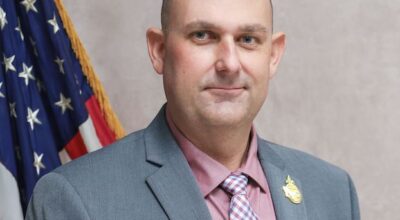Historic River Road home opening for private tours
Published 12:00 am Monday, November 2, 1998
By LEONARD GRAY / L’Observateur / November 2, 1998
WALLACE – Evergreen Plantation has stood silently along River Road in Wallace for years. The gates are about to open wide for its first tourists.Beginning Tuesday, New Orleans Tours Inc., under an exclusive contract,will bring tour buses to Evergreen Plantation, a National Historic Landmark owned by Matilda Gray Stream.
Full and half-day tours will be conducted Tuesdays through Saturdays.
According to project manager Jane Boddie, there will be no walk-up tours, and local visitors will have to meet the buses in New Orleans.
However, plans are to arrange a bus pickup point in the LaPlace area to accommodate local tourists.
“We’re thrilled to have the opportunity to open this plantation up to the public!” exclaimed Anna Pepper of New Orleans Tours.
Visitors at the plantation will be greeted by trained tour guides, also provided by New Orleans Tours, and be split into two smaller groups. Onewill view the house and immediate surroundings, including the original kitchen and the extensive gardens.
The second group will start at the unique double row of 22 slave cabins to the rear of the property, where they can also examine the original slave inventory records.
The total tour will take approximately 90 minutes.
The full-day tours will also include a visit to Laura Plantation in Vacherie. Prices are $48 for adults and $24 for children on the full-daytour and $36 for adults and $18 for children on the half-day tour.
For information about booking a tour, phone 592-0560.
Evergreen has 39 buildings on the National Register of Historic Places and, says Boddie, is the most complete plantation complex in the Deep South.
Drivers on River Road who have long noticed the graceful curving double- stairway on the front of the house were stunned several months ago when the stairs were removed.
But they’ve been renovated, strengthened and placed again on the 1786 Greek Revival-style house, only one element in the extensive restoration project, including re-moisturizing and repainting the wood.
The house itself for many years was the only building with modern plumbing and electricity, but now all main buildings have been modernized.
The gallery on the second floor, had rotted so badly it could not be walked upon. Now, it is also fully restored.Another remarkable feature of Evergreen is the double row of 22 slave cabins which face each other across an avenue of oaks. All but two aredouble-family occupancy cabins, and the remaining are four-plexes which, Boddie advised, were possibly used for hospitals for male and female patients among the slaves.
The row once included a slave church, used by descendants at least until the 1920s, but it was knocked down in 1965 by Hurricane Betsy. All thecabins now have tin roofs but are otherwise unrestored, as required by the National Register.
Bodie called the visit by tourists to the row of slave cabins the meditation walk.
Evergreen Plantation is sister to nearby Whitney Plantation, now owned by Formosa Plastics but about to be sold to New Orleans attorney John Cummings III for restoration.
Despite outward appearances, Whitney and Evergreen were originally built with identical floor plans, likely built at the same time by brothers Christophe and Jean Jacques Heidel. Jean Jacques likely built Whitneybefore his death in 1819. Christophe built Evergreen and died in 1800.After Christophe’s death, his daughter, Magdelaine (the widow of Pierre Antoine Becnel) bought out her sister, Francoise, in 1801. Upon her deathin 1830, her grandson, Pierre Clidamant Becnel, eventually became sole owner after buying out the interest of other heirs.
Pierre launched a massive remodeling of Whitney in 1832, contracting with builder John Carver of St. Charles Parish.Carver rebuilt the roof and added the captain’s walk at the roof’s peak (still accessible today through a steep stair and ladder from the attic). Healso added the large, plastered, two-story brick columns on the front and most of the outbuildings of the plantation.
Those outbuildings include two pigeonnaires, garconnaires, double-privy, milk barn and overseer’s cabin. The plantation also sports its originalkitchen building.
Evergreen, known at that time as Becnel Plantation, acquired its present name in 1884. It remained in the Becnel, then Songy families until thecombination of the 1927 Great Flood and the stock market crash of 1929 dealt the owners a one-two blow from which Evergreen couldn’t recover.
It lay derelict for 14 years, slowly succumbing to time, vandalism and the elements.
Matilda Gray of New Orleans bought Evergreen in the early 1940s and added the garden and brick walkways behind the house. The bricks used byGray in restoration of the house and construction of the gardens and walkways, all 300,000 of them, were transported from the demolished Uncle Sam Plantation site in St. James Parish.After her death in 1971, her niece, Matilda Gray Stream, acquired the property and still retains it. Boddie has been a live-in administrator forthe past year and a half.
“It’s a magnificent place!” Warren Reuther of New Orleans Tours commented. “This may open up the whole area!”
Back to Top
Back to Leisure Headlines
Copyright © 1998, Wick Communications, Inc.
Internet services provided by NeoSoft.
Best viewed with 3.0 or higher




